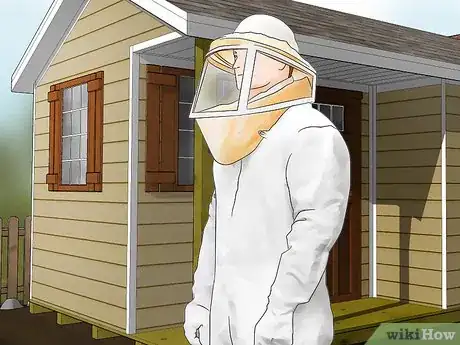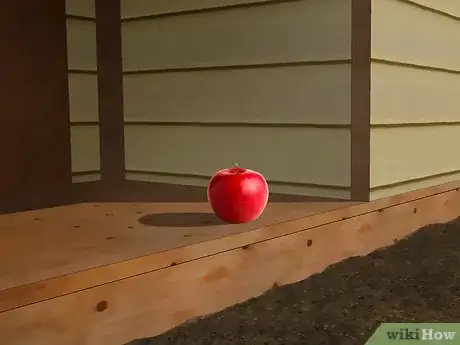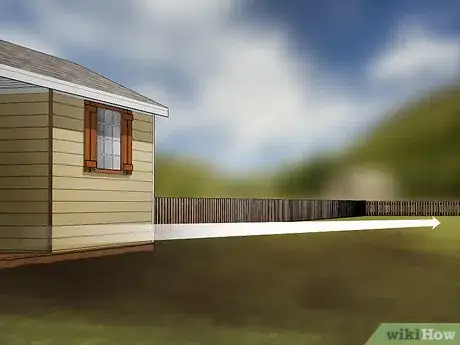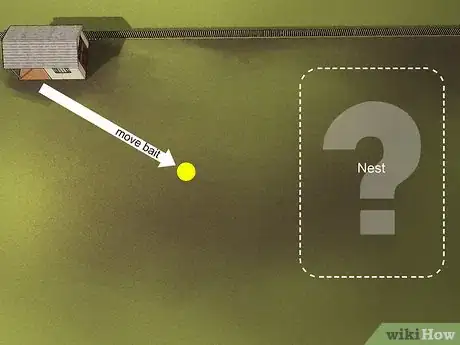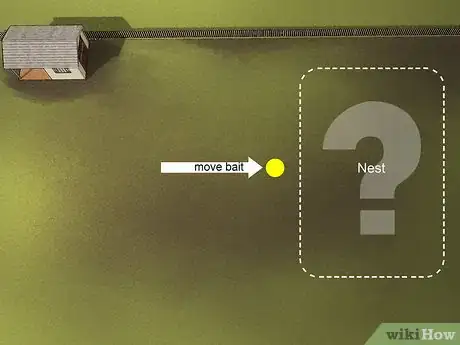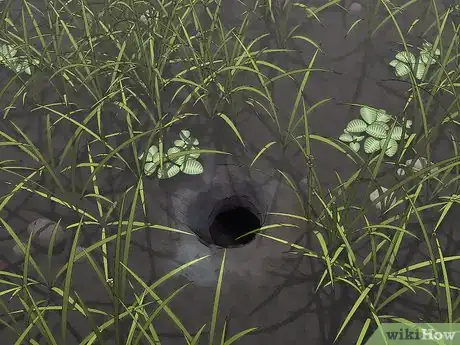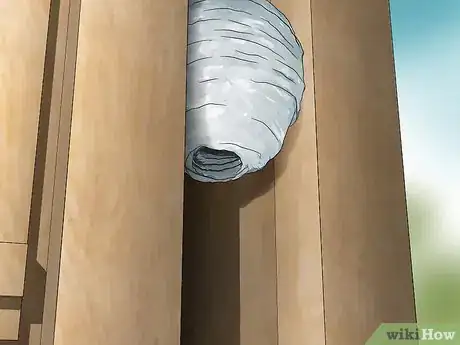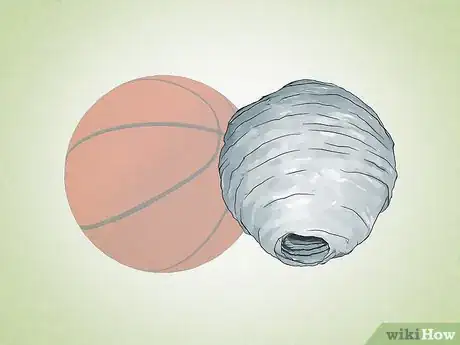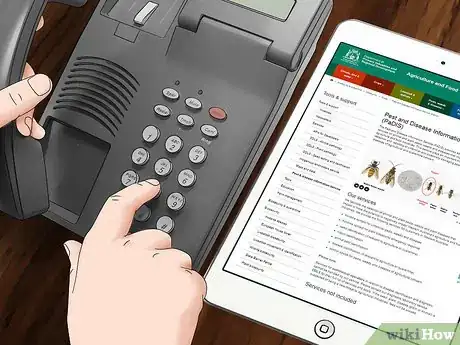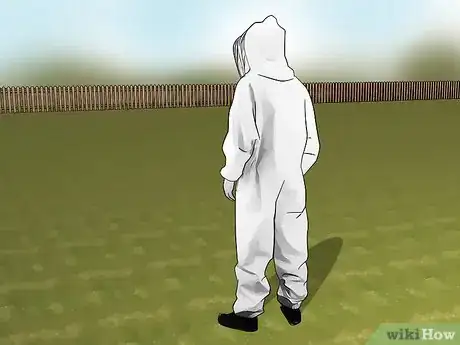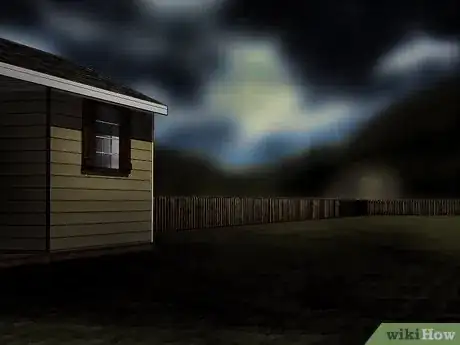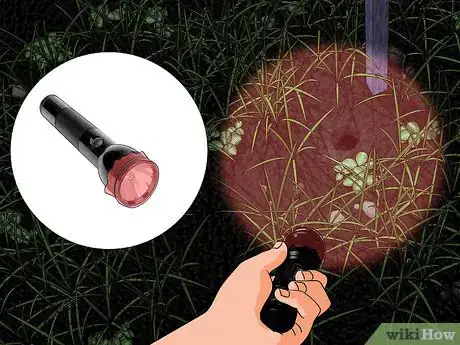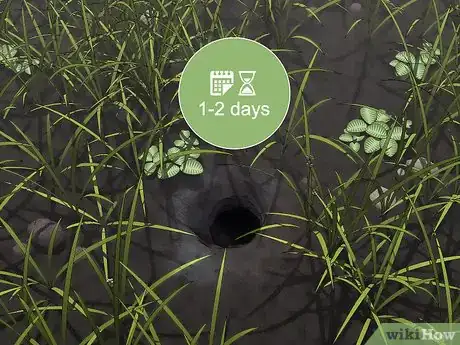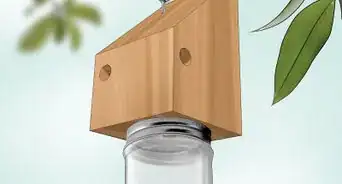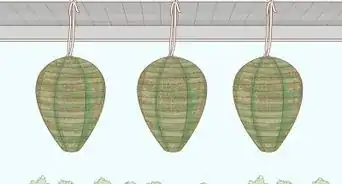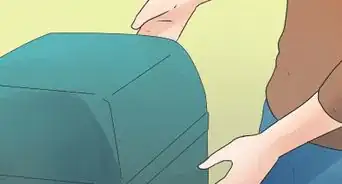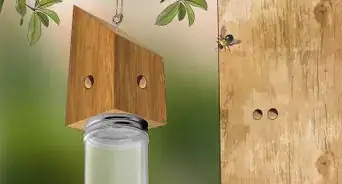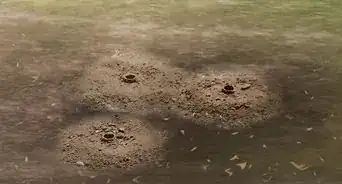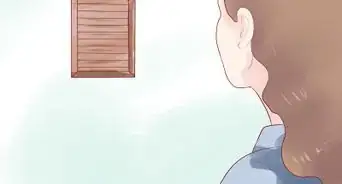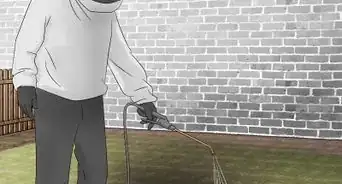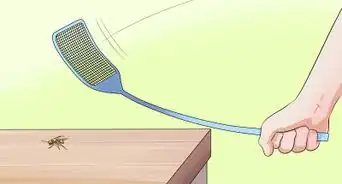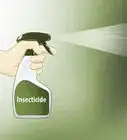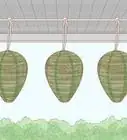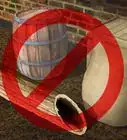This article was co-authored by Scott McCombe. Scott McCombe is the CEO of Summit Environmental Solutions (SES), a family-owned local pest solutions, animal control, and home insulation company based in Northern Virginia. Founded in 1991, SES has an A+ rating with the Better Business Bureau and has been awarded “Top Rated Professional,” and “Elite Service Award" by HomeAdvisor.
There are 9 references cited in this article, which can be found at the bottom of the page.
This article has been viewed 27,438 times.
Since they form large colonies and can sting multiple times, European wasps are potentially dangerous for humans, livestock, and pets. If you notice lots of wasps buzzing around your yard, leave out a ripe apple or raw meat as bait. European wasps fly straight back to their nest after finding food, so tracking down the nest should be easy. Unless you have experience exterminating wasps, it’s best to call a professional if you find a nest.
Steps
Tracking Wasps to the Nest
-
1Wear protective clothing when you look for the nest. Unlike bees, wasps can sting multiple times, and suffering multiple stings is dangerous. If you don’t have a bee suit and veil, wear thick clothing, long sleeves and pants, and gloves. Cover your head with a hood or hat, and avoid swatting at or otherwise aggravating any wasps you encounter.[1]
- Leave the wasps alone as you track them, and try to notice if they show signs of agitation. If a swarm of wasps starts buzzing around in agitation, back away and cover your face. Walk away slowly if they're not near you, and run away if they swarm around you or start attacking.[2]
-
2Leave out a ripe apple or raw meat as bait. Leave bait out around your yard or wherever you’ve seen wasps. The bait will attract wasps, and they’ll fly back to the nest after collecting food. European wasps fly straight back to the nest after finding resources, so it should be fairly easy to track down the nest.[3]Advertisement
-
3Wait for wasps to feed on the bait. Keep an eye on the bait after you leave it. Wait inside and look out a window or scout out the bait from several yards or meters away. It shouldn’t take long to attract wasps if there’s a nearby nest.[4]
-
4Follow the wasps back to the nest. Once you see wasps buzzing around the bait, keep a close eye on them. They’ll attend to the bait for a little while, then fly right back to the nest. Before long, you’ll likely see wasps flying in a straight line in 1 direction.[5]
-
5Set up another bait location if you lose track of the wasps. Since wasps are fast fliers, you might lose them before you can locate the nest. If this happens, set up more bait where you lost track of them. Wait for wasps to find the bait, then follow them when they head back to the nest.
-
6Move the bait and follow the wasps until you find the nest. Repeat the bait and follow sequence until you’ve found the nest. It might take a few tries, so have patience.
- You’ll know you’ve found the nest when you see dozens or hundreds of wasps flying in and around a specific spot. Most European wasp nests are underground, so you’ll probably see wasps flying in and out of a small opening in the ground.
Identifying the Nest
-
1Look for an opening in the ground where wasps enter and exit. Since 80 percent of European wasp nests are underground, the only indication might be traffic in and out of it. Even if you can’t see the nest itself, there will be enough wasps to hone in on the exact location once you’ve tracked them to the nest’s general area.[6]
- European wasp colonies contain tens of thousands of individual insects, so there will be plenty of traffic around the nest. The opening itself is small, and is usually about 2 inches (5.1 cm) in diameter.
-
2Check protected crevices if you don’t see a ground nest. Sometimes, wasps form nests inside walls, gutters, hollowed trees, and in other protected cavities. Use the wasps’ traffic patterns to pinpoint the nest’s location. If you suspect it might be inside a wall or other inaccessible spot, don’t try to get to the nest on your own.[7]
- Cutting a hole in the wall, tree, or other structure could aggravate the wasps.
-
3Distinguish between a European wasp nest and other hornet nests. A European wasp nest is round or oval in shape, and is usually about the size of a basketball, or about 10 inches (25 cm) in diameter. An outer insulating layer that resembles grey egg carton material distinguishes a European wasp nest from other wasp nests, in which honeycomb cells are clearly visible.[8]
- Other wasps usually nest above ground. If you find an above-ground nest, check for the insulating layer. If you find an underground nest, it most likely was built by a European wasp colony.
-
4Mark the nest site with a flag or colored stake. After tracking down the nest, mark the site so you or a professional exterminator can find it later. Leave the nest alone, and don’t plant the stake or flag directly into the nest site. Instead, place the mark a safe distance away to avoid aggravating the wasps.[9]
- Use a brightly colored stake or flag, as the best time to treat a wasp nest is before sunrise. You’ll probably look for the nest during the day, and you or a professional will need to head back to the nest when it’s dark. It’ll be easier to see a brightly colored mark in the dark.
Dealing with a European Wasp Nest
-
1Report the nest or contact a professional exterminator. In Western Australia, you’re required to report a European wasp nest to the Pest and Disease Information Service (PaDIS). If you live outside of Western Australia, the presence and reporting requirements for this pest varies. Contact your local government to seek advice on whether they provide pest control services; if they don't, it’s best to contact a professional, unless you have experience with treating wasp nests.[10]
- European wasps are classified as invasive pests in Australia. Contact PaDIS at +61 (0)8 9368 3080 to report a nest in Western Australia.
-
2
-
3Treat the nest before sunrise. The best time to apply insecticide is just before sunrise when it’s still dark. Most workers will return to the nest before dawn, so that’s when you’ll have the best shot at eradicating the colony.[13]
- Unlike other wasps, which are usually exterminated in the middle of the night, European wasps are active overnight.[14]
-
4Use a flashlight covered with red cellophane to find the opening. Place red cellophane over a flashlight and secure it with a rubber band. Since it’ll be dark, you’ll need a flashlight to find the nest’s opening.[15]
- Be sure to use red light, which is invisible to wasps, instead of an ordinary flashlight. Otherwise, you could attract them and run into problems.
- Use traffic patterns to pinpoint the opening of the nest. You’ll see wasps flying in and out at the opening.
-
5Apply an aerosol or dust insecticide labelled for wasps and hornets. Once you’ve found the opening, use an insecticide applicator with a long wand to spray a product labelled specifically for wasps and hornets.[16] Spray the insecticide directly onto the nest’s opening.[17]
- Use your product according to its instructions. If it’s a concentrate that needs to be diluted, mix it with water as directed.
-
6Check the nest in 1 to 2 days. A single application is usually enough, and you should see little or no activity within 1 to 2 days. If necessary, apply more insecticide just before the next sunrise.[18]
Warnings
- Physically destroying the nest with a baseball bat or other object is a quick way to anger a few thousand wasps, but it won't exterminate the colony.⧼thumbs_response⧽
- Don't attempt to get rid of an elevated wasp nest, especially if you'd need to climb a ladder to access it.[19]⧼thumbs_response⧽
- Don't try to burn or flood the nest. You could lose control of a fire, and burning and flooding the nest would just agitate the wasps.[20]⧼thumbs_response⧽
References
- ↑ https://ag.tennessee.edu/EPP/Publications1/European%20Hornets%20Tapping%20at%20your%20Window%20at%20Night.pdf
- ↑ https://www.mnn.com/family/protection-safety/blogs/how-to-coexist-with-bad-tempered-wasps-or-bees
- ↑ https://ag.tennessee.edu/EPP/Publications1/European%20Hornets%20Tapping%20at%20your%20Window%20at%20Night.pdf
- ↑ https://www.betterhealth.vic.gov.au/health/conditionsandtreatments/european-wasp
- ↑ https://www2.health.vic.gov.au/public-health/environmental-health/pesticide-use-and-pest-control/common-pests-in-victoria/european-wasps-pest-control
- ↑ https://www2.health.vic.gov.au/public-health/environmental-health/pesticide-use-and-pest-control/common-pests-in-victoria/european-wasps-pest-control
- ↑ https://www.agric.wa.gov.au/european-wasp/european-wasp-identification-guide
- ↑ https://www.agric.wa.gov.au/european-wasp/european-wasp-identification-guide
- ↑ https://ag.tennessee.edu/EPP/Publications1/European%20Hornets%20Tapping%20at%20your%20Window%20at%20Night.pdf
- ↑ https://www.agric.wa.gov.au/european-wasp/european-wasp-identification-guide
- ↑ Scott McCombe. Pest Control Specialist. Expert Interview. 19 November 2019.
- ↑ https://ag.tennessee.edu/EPP/Publications1/European%20Hornets%20Tapping%20at%20your%20Window%20at%20Night.pdf
- ↑ https://ag.tennessee.edu/EPP/Publications1/European%20Hornets%20Tapping%20at%20your%20Window%20at%20Night.pdf
- ↑ Scott McCombe. Pest Control Specialist. Expert Interview. 19 November 2019.
- ↑ https://www2.health.vic.gov.au/public-health/environmental-health/pesticide-use-and-pest-control/common-pests-in-victoria/european-wasps-pest-control
- ↑ Scott McCombe. Pest Control Specialist. Expert Interview. 19 November 2019.
- ↑ https://ag.tennessee.edu/EPP/Publications1/European%20Hornets%20Tapping%20at%20your%20Window%20at%20Night.pdf
- ↑ http://www.bawbawshire.vic.gov.au/Resident-Information/Animals/Bees-and-European-Wasps
- ↑ http://msue.anr.msu.edu/news/getting_rid_of_wasps_nests
- ↑ http://www.calgary.ca/CSPS/Parks/Pages/Planning-and-Operations/Pest-Management/Wasps.aspx
